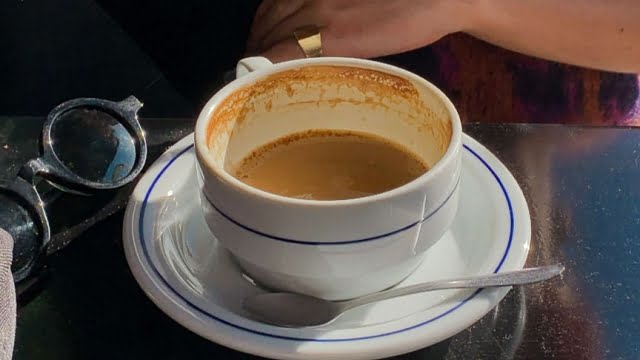Do you Love Coffee? Finding Your Perfect Roast

Why Freshly Roasted Coffee?
If you’re a coffee lover, you know that the type of roast can make all the difference in the taste and aroma of your cup of coffee. But with so many different roasts available, it can be overwhelming to know which one to choose. In this guide, we’ll explore the world of coffee roasts and provide tips on how to find your perfect match.
Understanding the Roasting Process
Before we dive into the different types of roasts, it’s important to understand the roasting process and how it affects the flavor of coffee beans.
Roasting is the process of heating raw coffee beans to transform them into the rich, flavorful beans we know and love. During the roasting process, the beans go through a series of chemical reactions that alter their color, taste, and aroma.
The roasting process can be broken down into three stages: drying, browning, and developing. During the drying stage, the beans lose their moisture content and turn a light brown color. During the browning stage, the beans begin to caramelize, producing sugars and oils that give them their characteristic flavor and aroma. Finally, during the developing stage, the beans continue to darken and the oils continue to develop, producing a richer, fuller flavor.
The Different Types of Coffee Roasts
Now that we understand the roasting process, let’s explore the different types of coffee roasts available.
Light Roast
Light roast coffee beans are roasted for the shortest amount of time, typically until they reach an internal temperature of around 356°F (180°C). Light roasts are characterized by their light brown color and mild flavor profile. They often have a light body, high acidity, and subtle fruit or floral notes.
Some popular light roast coffee beans include Ethiopian Yirgacheffe, Colombian Supremo, and Costa Rican Tarrazu.
Medium Roast
Medium roast coffee beans are roasted for slightly longer than light roasts, typically until they reach an internal temperature of around 410°F (210°C). Medium roasts are characterized by their medium brown color and more balanced flavor profile. They often have a medium body, medium acidity, and a slightly sweeter taste than light roasts.
Some popular medium roast coffee beans include Guatemalan Antigua, Brazilian Santos, and Kenyan AA.
Dark Roast
Dark roast coffee beans are roasted for the longest amount of time, typically until they reach an internal temperature of around 464°F (240°C). Dark roasts are characterized by their dark brown or almost black color and bold, intense flavor profile. They often have a full body, low acidity, and a smoky or chocolatey taste.
Some popular dark roast coffee beans include French Roast, Italian Roast, and Sumatra Mandheling.
Choosing Your Perfect Roast
Now that we know about the different types of coffee roasts, how do we choose the perfect one for us? Here are some tips:
Consider Your Personal Preferences
Your personal taste preferences should be the most important factor in choosing your coffee roast. Do you like a mild, fruity flavor or a bold, smoky taste? Do you prefer a lighter or darker roast? Experiment with different roasts until you find the one that suits your taste buds.
Consider the Brewing Method
The brewing method you use can also affect the taste of your coffee. Some brewing methods, like drip coffee, are better suited to lighter roasts, while others, like French press, can handle
bolder, darker roasts. Consider the brewing method you typically use and choose a roast that will complement it.
Consider the Occasion
The occasion can also be a factor in choosing your coffee roast. Are you brewing a cup of coffee to enjoy with breakfast, or are you making a rich, espresso-based drink for an after-dinner treat? Lighter roasts are often better for morning coffee, while darker roasts are perfect for espresso-based drinks.
Exploring Regional Roasts
In addition to the three main types of roasts, coffee also comes in regional roasts, which are named after the region where the beans are grown. Here are a few popular regional roasts:
Ethiopian Coffee
Ethiopian coffee is known for its bright, fruity flavor and floral aroma. It’s often described as having a “winey” taste, with notes of berries and citrus. Ethiopian coffee is typically light to medium roasted to preserve its unique flavor profile.
Colombian Coffee
Colombian coffee is known for its smooth, nutty flavor and mild acidity. It’s often described as having a caramel or chocolate-like taste. Colombian coffee is typically medium roasted to bring out its full flavor.
Jamaican Blue Mountain Coffee
Jamaican Blue Mountain coffee is known for its mild flavor and lack of bitterness. It’s often described as having a smooth, creamy taste with notes of nutmeg and cinnamon. Jamaican Blue Mountain coffee is typically medium roasted to preserve its delicate flavor.
Brewing Your Perfect Cup of Coffee
Now that you’ve chosen your perfect coffee roast, it’s time to brew your perfect cup of coffee. Here are some tips for brewing your best cup:
Use Freshly Roasted Beans
Freshly roasted beans will give you the best flavor and aroma. Try to use beans that have been roasted within the past two weeks.
Grind Your Beans Right Before Brewing
Grinding your beans right before brewing will give you the freshest flavor. Use a burr grinder for the most consistent grind.
Use the Right Amount of Coffee
Use the recommended amount of coffee for your brewing method. Using too little or too much coffee can affect the taste of your coffee.
Use the Right Water Temperature
The ideal water temperature for brewing coffee is between 195-205°F (90-96°C). Using water that’s too hot or too cold can affect the flavor of your coffee.
Experiment with Brewing Methods
Different brewing methods can produce different flavors and aromas. Experiment with different methods to find your favorite.
Conclusion
Coffee roasts can be a complex topic, but by understanding the basics of the roasting process and the different types of roasts available, you can find your perfect cup of coffee. Remember to consider your personal taste preferences, the brewing method, and the occasion when choosing your coffee roast. And don’t be afraid to experiment with different roasts and brewing methods until you find the one that’s right for you.





